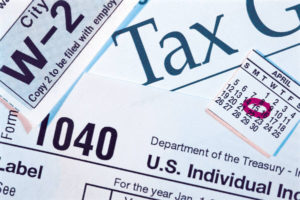Heard the claims and counter claims of whether or not tax reform is good or bad for your take home pay? Here is the tables so you can see it yourself – If you have not yet checked your bank deposit record.
The 2017 tax act changed the tax rates and income ranges to which the rates apply. The level of income that is subject to a higher tax bracket can influence a number of decisions by employees, including how much salary to defer into a traditional 401(k) plan, which reduces taxable income for a given year by the amount contributed, or whether to participate in a nonqualified deferred income plan, if that option is available through the employer.
The charts below shows 2018 versus 2017 tax rates and income brackets for single filers and married couples filing jointly (additional income tax rates and brackets can be viewed here):
| 2018 Tax Rate | Single | Married Filing Jointly |
| 10% | $0 to $9,525 | $0 to $19,050 |
| 12% | $9,525 to $38,700 | $19,050 to $77,400 |
| 22% | $38,700 to $82,500 | $77,400 to $165,000 |
| 24% | $82,500 to $157,500 | $165,000 to $315,000 |
| 32% | $157,500 to $200,000 | $315,000 to $400,000 |
| 35% | $200,000 to $500,000 | $400,000 to $600,000 |
| 37% | Over $500,000 | Over $600,000 |
As compared with:
| 2017 Tax Rate | Single | Married Filing Jointly |
| 10% | $0 to $9,325 | $0 to $18,650 |
| 15% | $9,325 to $37,950 | $18,650 to $75,900 |
| 25% | $37,950 to $91,900 | $75,900 to $153,100 |
| 28% | $91,900 to $191,650 | $153,100 to $233,350 |
| 33% | $191,650 to $416,700 | $233,350 to $416,700 |
| 35% | $416,700 to $418,400 | $416,700 to $470,700 |
| 39.6% | Over $418,400 | Over $470,700 |

